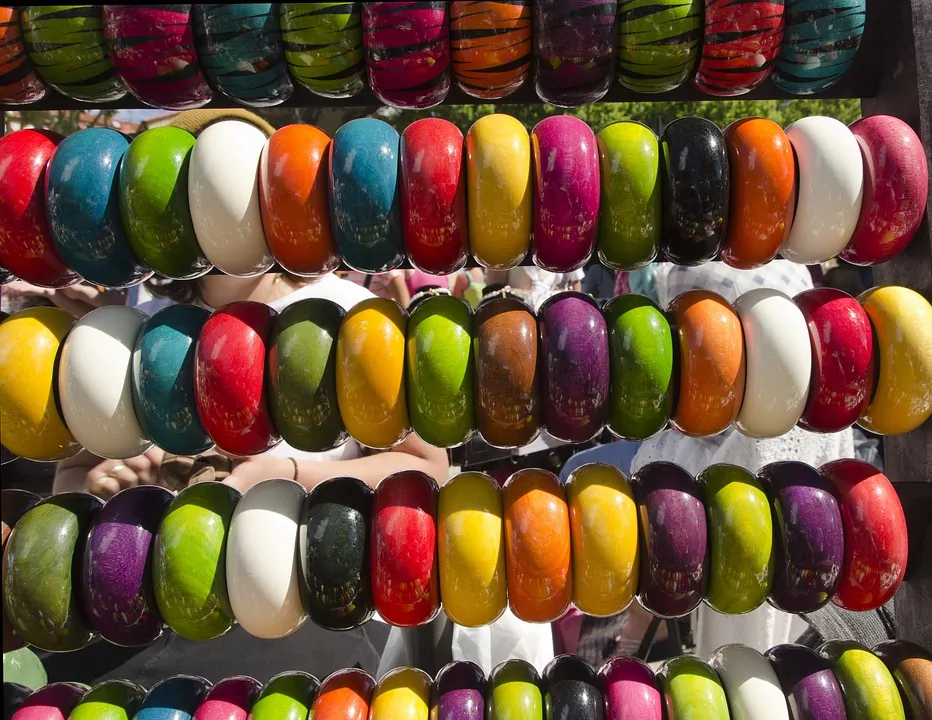
Table of Contents
As Jewelry Shopping Guide editors, we write about things that we love and we think you’ll like too. We often have affiliate partnerships, and may generate some revenue from these links at no cost to you.
Bakelite jewelry has been around for decades and is known for being inexpensive and versatile. It’s a type of plastic that can be formed into various designs.
When it was first introduced, Bakelite revolutionized the jewelry industry and took the fashion world by storm. Everyone seemed to be wearing Bakelite at some point in the last century.
Today, Bakelite’s status in the fashion world has changed. Let’s take a look at this classic material.
What Is Bakelite Jewelry?
Bakelite jewelry is explained easily enough – it is jewelry made out of Bakelite. So, what is Bakelite?
Bakelite is the first plastic to ever be made entirely out of synthetic components. It was first developed in 1907 by the Belgian-American chemist Leo Baekeland in New York. It’s named after him and is sometimes called “Baekelite” too.
Chemically speaking, Bakelite is a thermosetting phenol formaldehyde resin – it’s formed out of the condensation reaction between formaldehyde and phenol. Plainly speaking, it’s plastic.
Patented in 1909, two years after its creation, Bakelite quickly became a revolutionary product for its many industrial applications.
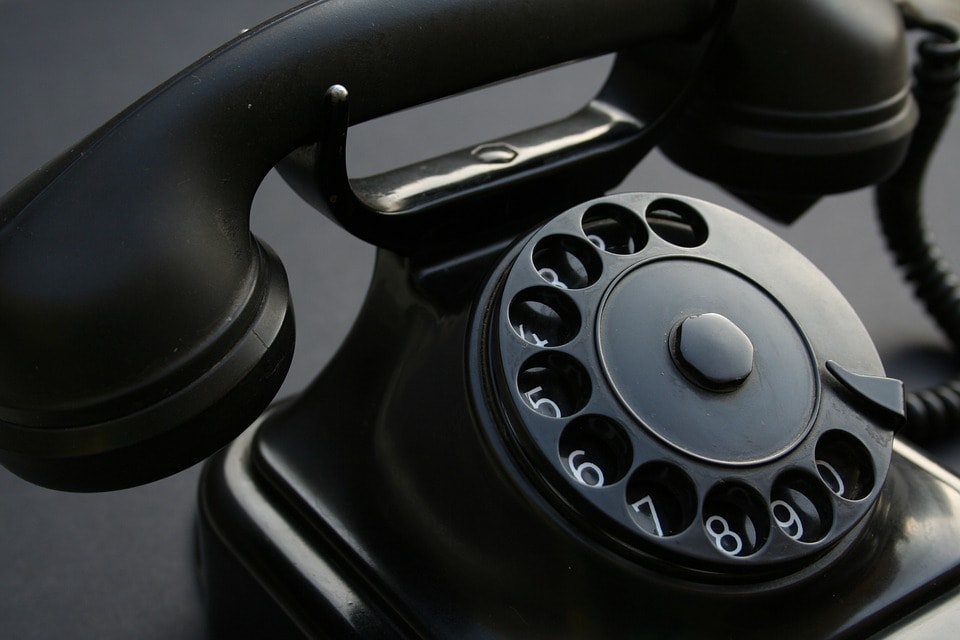
As it possesses electrical non-conductivity as well as certain heat-resistant properties, Bakelite plastic quickly found a place in electrical insulations, telephone and radio castings, and a lot of diverse applications such as pipe stems, kitchenware, kids’ toys, and even firearms.
So, why exactly is Bakelite jewelry a thing?
Let’s take a look at its history to answer that question.
How Bakelite Jewelry Became a Thing
Even though Bakelite was invented before the first decade of the 20th century was over it wasn’t until the late 1920s that it started seeing some regular use in jewelry designs.
And it wasn’t until the 1930s and the 1940s that it truly rose to popularity.
When it finally did, however, it seemingly took over the jewelry industry. It was promoted by many of the most prominent jewelry designers such as Coco Chanel and Elsa Schiaparelli and was featured in high-end fashion magazines like Vogue.
Aside from these high-end jewelry designers, Bakelite was also frequently used in the artisan spheres and became a staple in most small jewelry shops.
After all, it was an inexpensive material so nothing stopped people from experimenting with it and crafting whatever their imagination led to. The reason the more popular designers could charge three- or four-digit sums for Bakelite jewelry lay mostly in the power of their brands.
Why Bakelite?
But it wasn’t just the inexpensiveness of Bakelite that made it so desirable to jewelry designers – it was the qualities it possessed.
- Beautiful bright colors like emerald, lilac, tortoiseshell, burgundy, amber, honey, orange, bright yellow, grass green, and blood red expressed in different levels of transparency and lucidity, easily captivated the eyes of the public. In fact, it was precise because Bakelite in these colors became available in the 1920s that jewelry created from the material started growing in popularity.
- Additionally, Bakelite proved to be a very easily malleable material that could be shaped into anything from simple beads to complex and gorgeous decorative figurines.
- Because it was a low-priced material, jewelry designers had no qualms about using it in any way they choose. They often didn’t hesitate to paint over it, laminate it, or apply all sorts of different treatments that they wouldn’t do with a precious gemstone.
All these factors combined resulted in the Bakelite jewelry’s boom in popularity in both the U.S. and Europe and allowed designers to get creative, mixing styles, colors, and textures in a way that hadn’t been done before.
- French designers, for example, used the geometric Art Deco motifs to create designs of African, Aztec, and Egyptian origins, as well as other discreet and elegant designs.
- German designers, on the other hand, were very much inspired by the austere Bauhaus aesthetic.
- Other European designers also frequently combined Bakelite with other materials such as wood or metal to create more diverse and innovative designs.
As the years passed Bakelite slowly stopped being as popular as it was in the 30s and the 40s, but it remained a well-known and loved jewelry type, nevertheless.
As the technology advanced, more and more often Bakelite jewelry started being directly cast into molds and not cut and reshaped by hand which also contributed to the decline of its novelty. Still, even though it’s not what it used to be, and its prices decreased, Bakelite jewelry remained a popular choice amongst many artisan designers and customers.
Bakelite Jewelry Today
If we’re talking about Bakelite jewelry that’s produced today, the popularity remains in use in jewelry while the price has decreased.
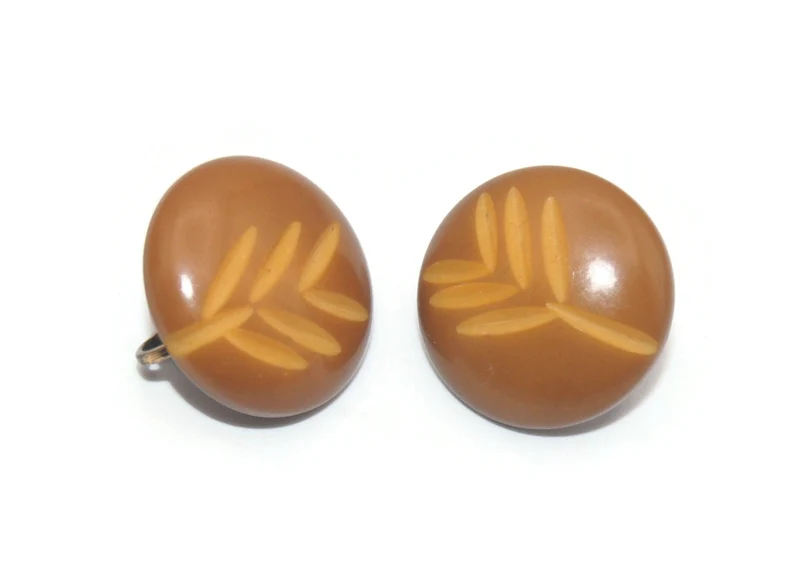
However, old Bakelite jewelry is still quite sought-after, and a lot of collectors are willing to pay large sums for the old, retro designs before the middle of the 20th century.
That’s so both because of the novelty factor of it and the idea of collecting something with so much history in it, as well as the fact that Bakelite jewelry was indeed different then than what it is now. It was crafted in a different manner and the material itself was different as well. All that makes old Bakelite jewelry very enticing for collectors.
Bakelite Jewelry Value
Speaking of newly created Bakelite jewelry, its value is entirely based on its design and its designer. As a material Bakelite is inexpensive enough to simply not be of any significant value.
Of course, Bakelite jewelry can also include different materials and components – it can even have precious gemstones in it which can all affect its overall price.
However, speaking of jewelry made entirely of Bakelite, its value will rest in whether or not the designer’s brand carries any weight and on how beautiful exactly the design itself is.
Is It Safe To Wear Bakelite Jewelry?
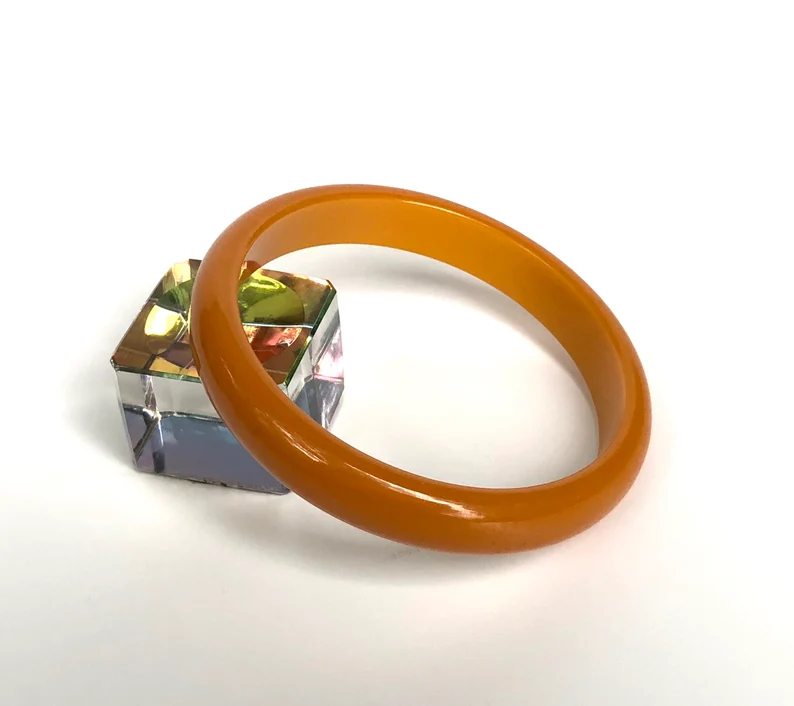
That’s an understandable question, given the materials that go into Bakelite. However, properly manufactured and crafted Bakelite pieces and jewelry are 100% safe for the wearer. Or at least, they are as safe as any other piece of plastic in your home.
It’s the manufacturing process that can be dangerous and hazardous as the plastic dust that’s produced can be very damaging if inhaled. If you’re planning on drilling or cutting Bakelite, then you should always wear a face mask.
In extreme cases, if the Bakelite piece gets broken and dust flies around you – cover your face and clean the area thoroughly. However, these extreme situations aren’t any different than they would be with other common household materials around us. So, as far as we’re talking about well-made and well-maintained Bakelite – it’s perfectly safe.
How To Clean And Maintain Bakelite Jewelry
As a plastic, Bakelite is soft and easy to harm. Most gemstones, minerals, and metals are hard enough to cut or scratch, so be careful when storing them.
As far as washing and cleaning it is concerned, you can do so with warm water and a soft soap – avoid stronger detergents as they can damage the surface of the jewelry, especially if it’s been painted or polished.
How To Tell Bakelite Jewelry From Its Imitations
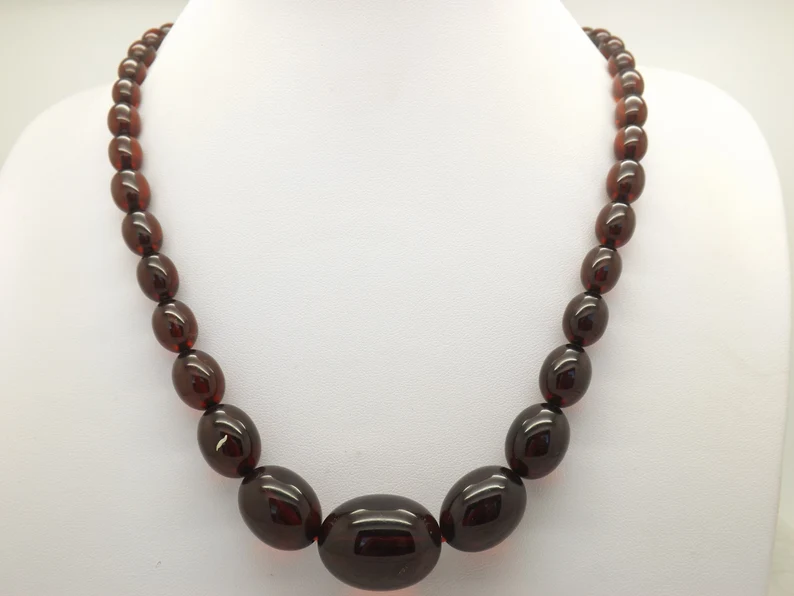
Yes, there are imitations of Bakelite. Cheaper and lighter plastics are often used today and are called Bakelite to try and capitalize on their popularity.
It’s not rare, especially online, for people to try and sell newly made, cheap fakes as old and classic jewelry pieces. Here are a few tips on how to tell real Bakelite jewelry from fake:
- Drop the piece of Bakelite in hot water for a while. Sniff it after taking it out – Bakelite smells like camphor.
- Alternatively, you can touch a small and hidden part of the piece (preferably on its back where it’s rarely viewed) with a cotton swab that’s been dipped in a household cleaner. If the piece is vintage Bakelite, the accumulated patina will leave a yellow stain on the cotton. If not – then it’s not vintage Bakelite. Don’t forget to rinse the piece immediately either way.
- You can also try to weigh the piece against another that you know is Bakelite – true Bakelite is usually heavier than most modern fakes.
Where to Find Bakelite Jewelry Today
You can find many varieties of plastic jewelry on the market today, but if you’re looking for vintage and authentic Bakelite pieces, you’ll have a host of options on sites like Amazon and Etsy.
Because these sites work like marketplaces, there is a range of artisan designers offering their products at competitive prices. You can also easily compare, contrast, and check the value of each piece without navigating through various sites.









